Loading...
What is the appendix?
The appendix is a small, finger-like pouch of the intestinal tract located where the small and large join. It has no known use. It is postulated that the appendix may be involved in the body�s immunity. Its function, however, is not essential. People who have had appendectomies do not have an increased risk toward infection.
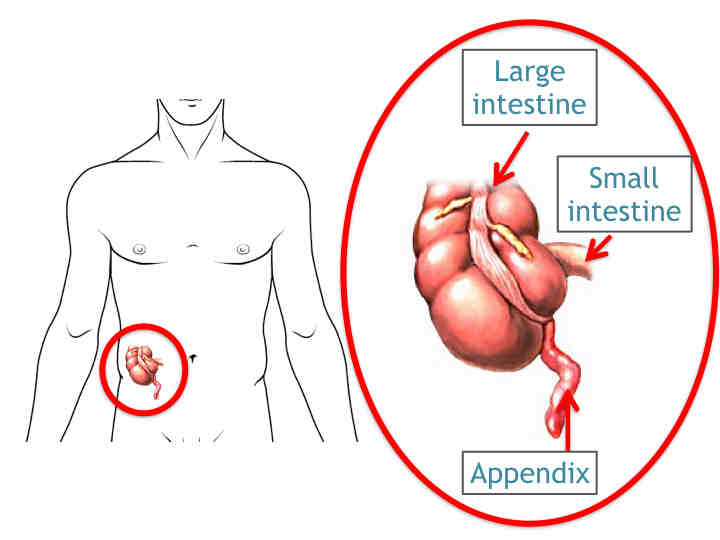
What is appendicitis?
Appendicitis is an inflammation of the appendix. It usually occurs when its lumen is blocked by a piece of stool (fecolith), thereby blocking its contents from emptying into the intestines. These secretions collect and engorge, causing the appendix to swell up. This then gets infected to form pus within. The swelling ultimately exerts pressure on the blood supply to the appendix, resulting in its cut off. This leads to gangrene of a whole or part of the appendix and it ruptures. This results in spillage of infected fecal material and pus into the abdominal cavity. If left neglected, this can ultimately lead to abdominal abscesses, severe systemic infection, septicemia and death.
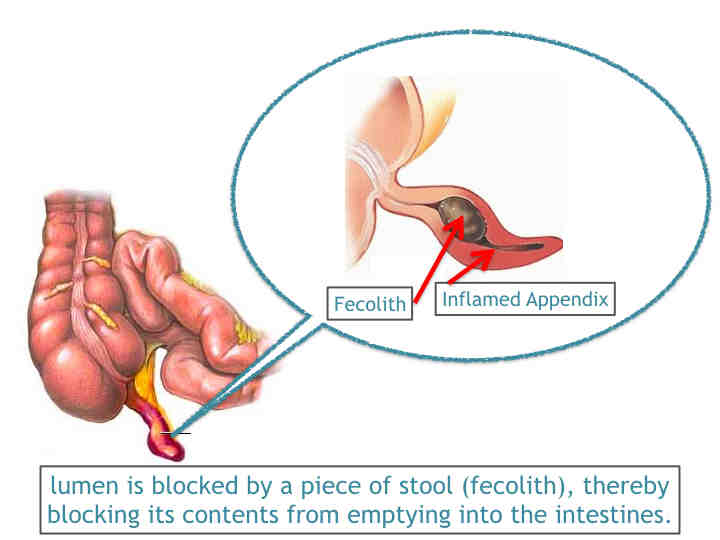
What are the symptoms of appendicitis?
The symptoms are different from person to person but may include:
Abdominal pain - usually starting near the belly button (umbilicus), then moving to the right lower side of the abdomen.
Fever
Nausea
Vomiting
Constipation or diarrhea
Loss of appetite
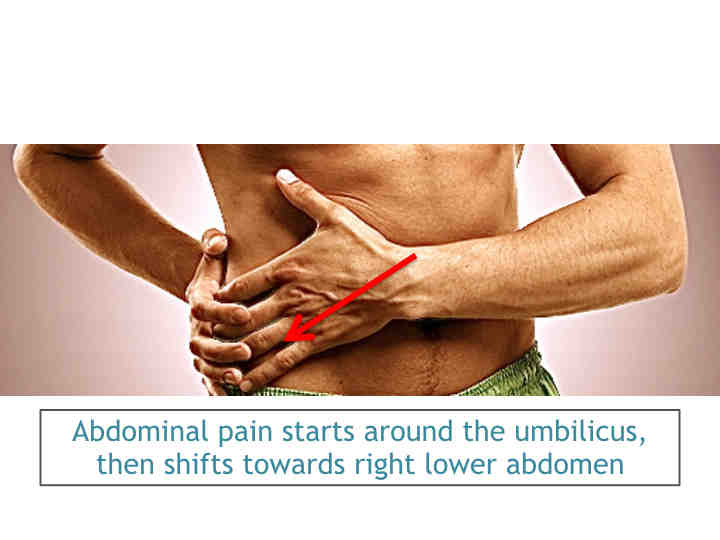
The symptoms of peritonitis (inflammation of the abdominal cavity due to an inflamed or ruptured appendix) are much more severe. The pain is worse and is felt throughout the abdomen. The abdomen may be swollen and feel tight or hard.
Children under 10years, pregnant women and the elderly are more likely to not have the usual symptoms of appendicitis. Because of this, they may delay treatment, which makes it more likely that their appendix will burst. It is very important for these people to be especially careful to report the early signs of appendicitis.
How is appendicitis diagnosed?
Sometimes it is difficult to diagnose appendicitis, especially in young children, older adults, and pregnant women. Your health care provider will review your symptoms and examine you.
You may have the following tests:
Blood tests
Urine tests
Imaging - Abdominal x-rays, Ultrasound, CT scan etc.
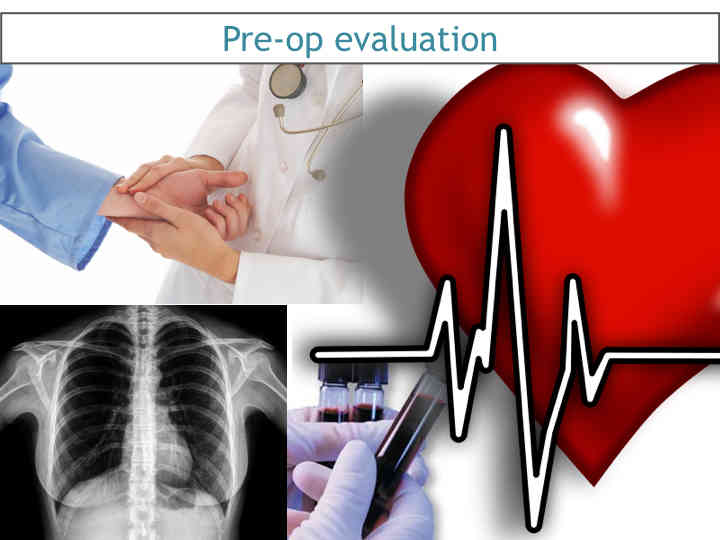
How is it treated?
If the diagnosis is not clear, you may be watched closely in the emergency room or hospital for 12 to 24 hours to see if surgery is necessary. In most cases the appendix must be removed. The operation is called an appendectomy.
Peritonitis is also treated with surgery and is a medical emergency. A person with symptoms of peritonitis needs to be seen in the emergency department as soon as possible.
A rupture of the appendix can also cause an abscess (infected sore) near the place where the appendix ruptured. If the appendix does rupture, the surgeon may put a drainage tube in the abdomen to let the infection drain for a few days after surgery.

Before surgery you will be given antibiotics. These may be continued 24 hours or many days, depending on whether your appendix ruptured and caused peritonitis.
Because health care providers cannot always be sure that the appendix is inflamed until they examine it during surgery, about 15% of appendixes are removed that are not inflamed. However, it is appropriate for a provider to risk the removal of a normal appendix so that he or she is sure to not miss a case of true appendicitis.
What is an appendicectomy?
The surgical removal of the appendix is called appendicectomy. Appendicitis is one of the most common surgical problems. On an average, 1 in 2,000 people has an appendectomy sometime during their lifetime. Treatment requires an operation to remove the infected appendix.

How is an appendicectomy done?
Traditionally, the appendix was removed through an incision in the right lower abdominal wall. In most laparoscopic appendectomies, surgeons operate through 3 small incisions (each 5-10mm) while watching an enlarged image of the patient�s internal organs on a television monitor. In some cases, one of the small openings may be lengthened to 2 or 3 inches to complete the procedure.
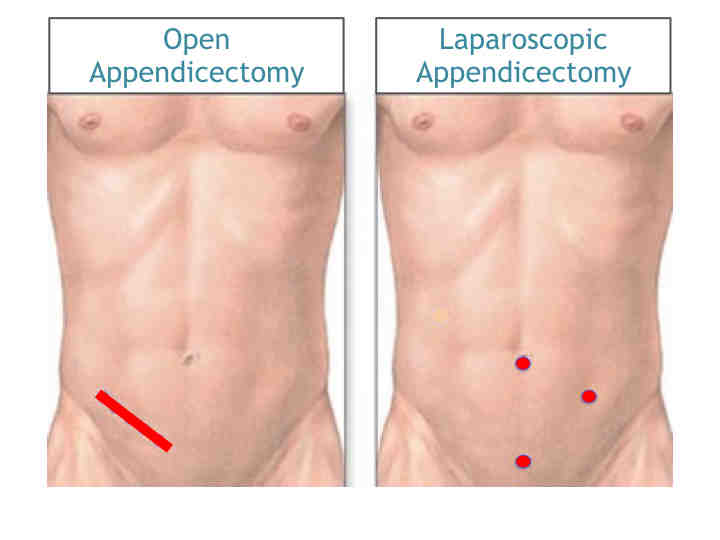
What are the advantages of laparoscopic appendectomy?
Results may vary depending upon the type of procedure and patient�s overall condition. Common advantages are:
Less postoperative pain
May shorten hospital stay
May result in a quicker return to bowel function
Quicker return to normal activity
Better cosmetic results
Are you a candidate for laparoscopic appendectomy?
Although laparoscopic appendectomy has many benefits, it may not be appropriate for some patients. Early, non-ruptured appendicitis usually can be removed laparoscopically. Laparoscopic appendectomy is more difficult to perform if there is advanced infection or the appendix has ruptured. A traditional, open procedure using a larger incision may be required to safely remove the infected appendix in these patients.
How is laparoscopic appendectomy performed?
The words 'laparoscopic' and 'open' appendectomy describes the techniques the Surgeon uses to gain access to the internal surgery site. Most laparoscopic appendectomies start the same way. Using a cannula (a narrow tube-like instrument), the surgeon enters the abdomen. A laparoscope (a tiny telescope connected to a video camera) is inserted through a cannula, giving the surgeon a magnified view of the patient�s internal organs on a television monitor. Two other cannulas are inserted to allow the surgeon to work inside and remove the appendix. The entire procedure may be completed through the cannulas or by lengthening one of the small cannula incisions. A drain may be placed during the procedure. This will be removed before you leave the hospital.
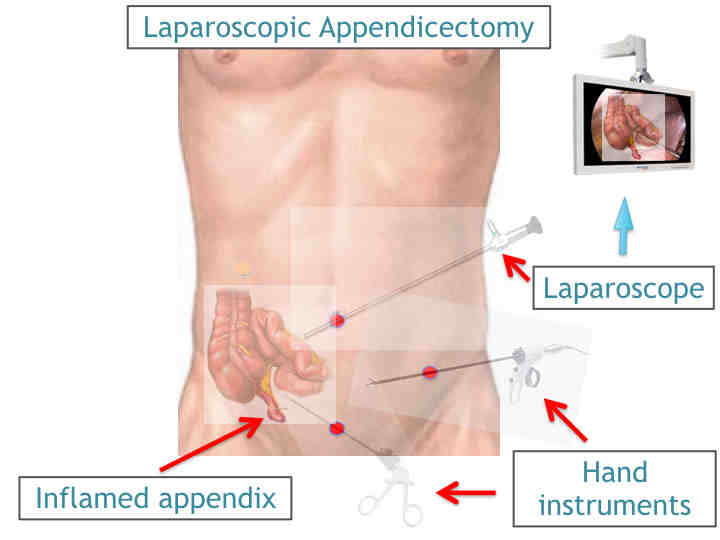
What happens if the operation cannot be performed or completed by laparoscopy?
In a small number of patients the laparoscopic method is not feasible because of the inability to visualize or handle the organs effectively. When the surgeon feels that it is safest to convert the laparoscopic procedure to an open one, this is not a complication, but rather sound surgical judgment. Factors that may increase the possibility of converting to the "open" procedure may include:
Extensive infection and/or abscess
A perforated appendix
Obesity
A history of prior abdominal surgery causing dense scar tissue
Inability to visualize organs
Bleeding problems during the operation
The decision to perform the open procedure is a judgment decision made by your surgeon either before or during the actual operation. The decision to convert to an open procedure is strictly based on patient safety.
What should I expect after an appendicectomy?
After the operation, it is important to follow your doctor�s instructions. Although many people feel better in just a few days, remember that your body needs time to heal.
For the first day or so after surgery, you may not be given anything to eat or drink. Then you will be allowed to have small amounts of water, later clear liquids, and finally some solid food until you are able to handle a regular diet.
You are encouraged to be out of bed the day after surgery and to walk. This will help diminish the risk of blood clots in your legs and of soreness in your muscles.

You will probably be able to get back to most of your normal activities in one to two weeks time. These activities include showering, driving, walking up stairs, working and engaging in sexual intercourse.
If you have prolonged soreness or are getting no relief from the prescribed pain medication, you should notify your surgeon.
You should call your surgeon and schedule a follow up appointment for about 1 week following your operation.
What complications can occur after a laparoscopic appendicectomy?
As with any operation, there are risks including the risk of complications. However, the risk of one of these complications occurring is no higher than if the operation was done with the open technique.
Bleeding
Infection
Removal of a normal appendix
A leak at the edge of the colon where the appendix was removed
Injury to adjacent organs such as the small intestine, ureter or bladder
Blood clot to the lungs
It is important for you to recognize the early signs of possible complications. Contact your surgeon if you have severe abdominal pain, fever, chills or rectal bleeding.
When to call your doctor after a laparoscopic appendicectomy?
Be sure to call your physician or surgeon if you develop any of the following:
Persistent fever over 39oC (101oF)
Bleeding
Increasing abdominal swelling
Pain that is not relieved by your medications
Persistent nausea or vomiting
Chills
Persistent cough or shortness of breath
Pus oozing from any incision site
Redness surrounding any of your incisions that is worsening or increasing
You are unable to eat or drink liquids

